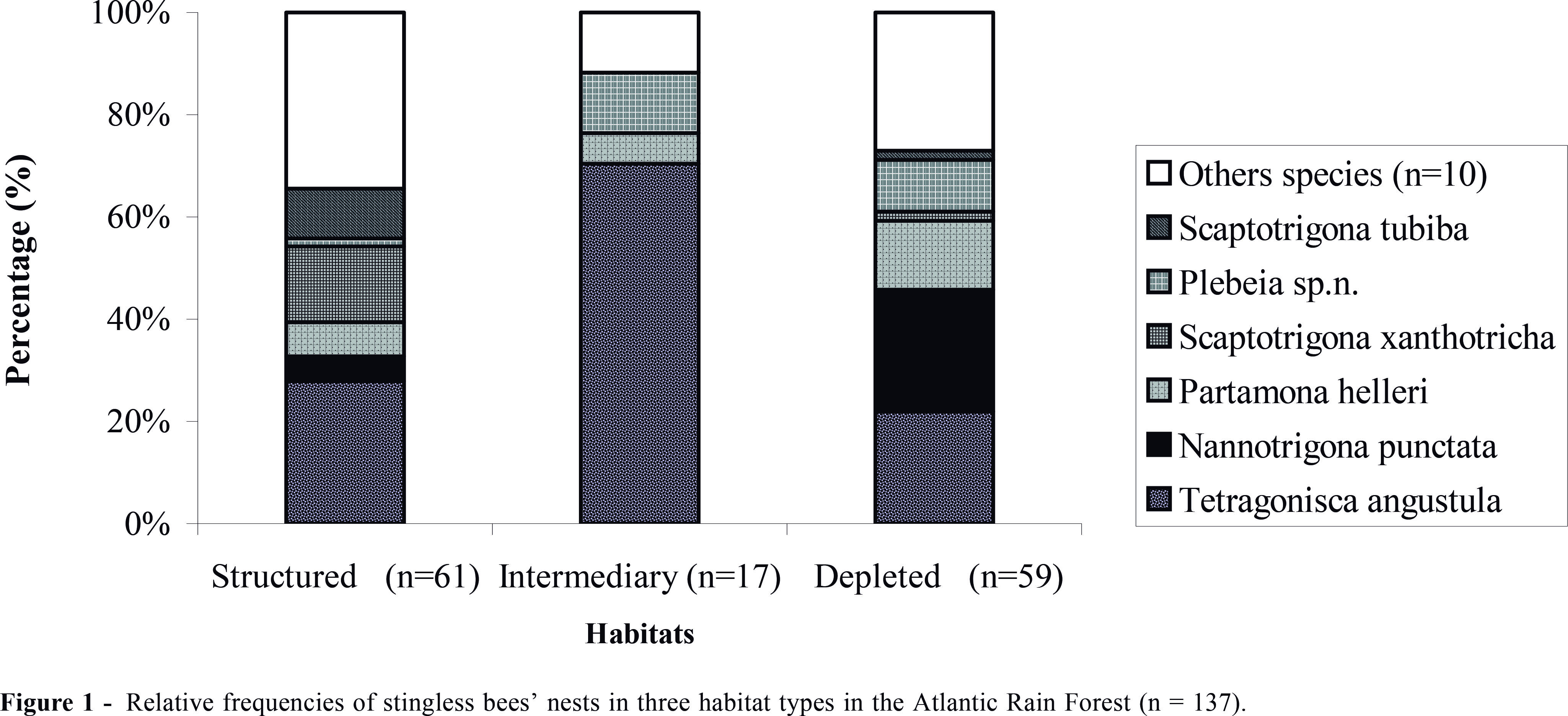Locais de nidificação e abundância de Meliponini (Hymenoptera: Apidae) em habitats heterogêneos da Mata Atlântica, Bahia, Brasil
DOI:
https://doi.org/10.35699/2675-5327.2003.21830Palavras-chave:
Stingless bees, Nesting sites, Nest density, Endemic species, Atlantic Rain Forest, Tetragonisca angustulaResumo
This work compares the nest distributions of the six most abundant species of stingless bees among three habitat types (structured, recovering and depleted forest) within a fragment of Atlantic Rain Forest: Tetragonisca angustula, Nannotrigona punctata, Partamona helleri, Scaptotrigona xanthotricha, Plebeia sp.n. and Scaptotrigona tubiba. The nests of these species represented, respectively, 31%, 12%, 9%, 7%, 6% and 5% of all stingless bees’ nests (n=137) found within an area of 11,3 ha. The frequency of nests found in each habitat and substratum type varied significantly among the six species. S. xanthotricha and S. tubiba were found to nest only in tree holes within structured forest, while T. angustula, P. helleri and Plebeia sp.n. were found in all three habitats. P. helleri was abundant in depleted forest, where it build partially exposed nests in manmade structures, frequently in association with termites. T. angustula and Plebeia sp. n. were the most abundant species in the recovering forest, nesting in tight association with the fast growing and dominant tree Tapirira guianensis. Simplification of forest structure in the recovering habitat clearly favors the population expansion of T. angustula. N. punctata occupies living trees in structured forest and artificial cavities in depleted habitat, where it is the most abundant nesting species. The unexpected absence of N. punctata in the recovering forest was partially attributed to exploitative competition with T. angustula.

Downloads
Arquivos adicionais
Publicado
Edição
Seção
Licença

Este trabalho está licenciado sob uma licença Creative Commons Attribution-NonCommercial 4.0 International License.
